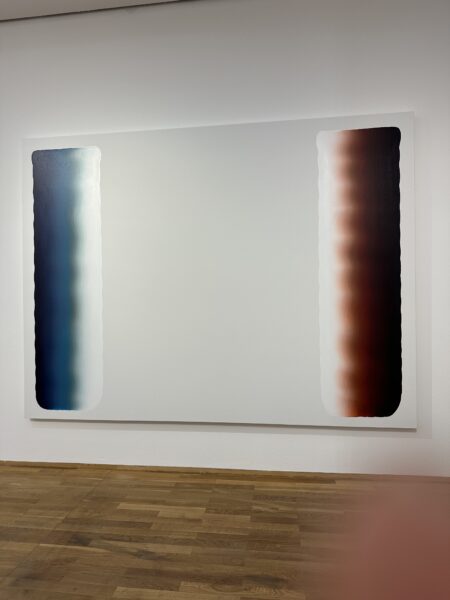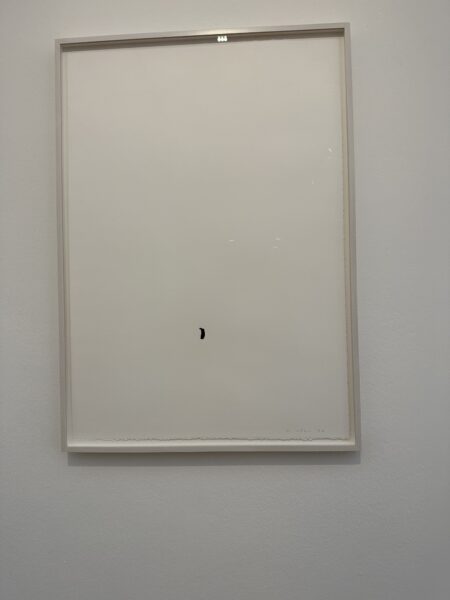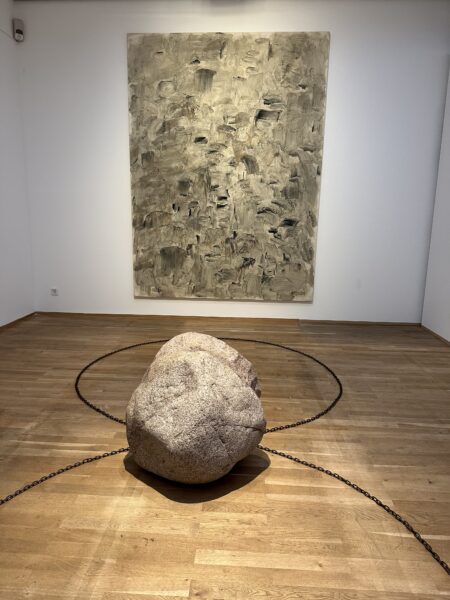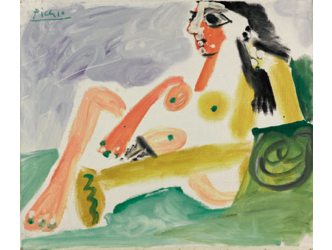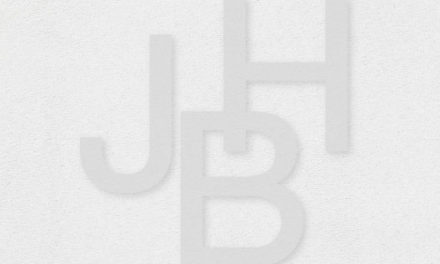Korean living in Japan
Lee Ufan (born in 1936), the Korean artist who lives in Japan, was the subject of a major retrospective which travelled all over Japan in 2022 and 2023 (see here the report I wrote covering the exhibition and the visit to his studio in Kamakura. See here the report I wrote on the occasion of his exhibition in Arles).
Hamburger Bahnhof
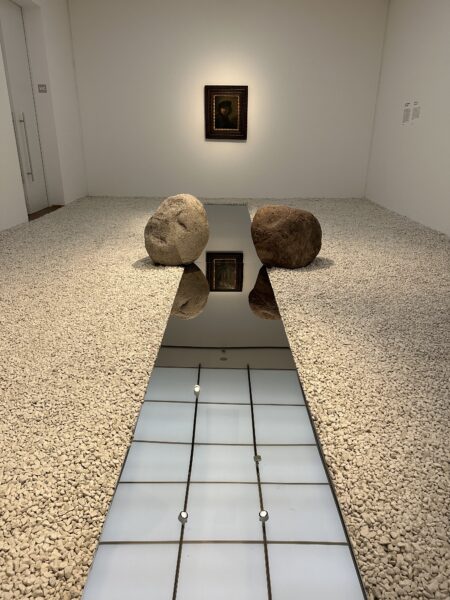
Lee Ufan and Rembrandt
It has finally touched down at the Hamburger Bahnhof in Berlin with its two new directors, Sam Bardaouil and Till Fellrath. There, it has also given rise to a fascinating temporal crossover. At the museum dedicated to contemporary art, Lee Ufan has requested for an old masters painting from the Gemaldegalerie in Berlin to appear in his exhibition. It is a self-portrait by Rembrandt.
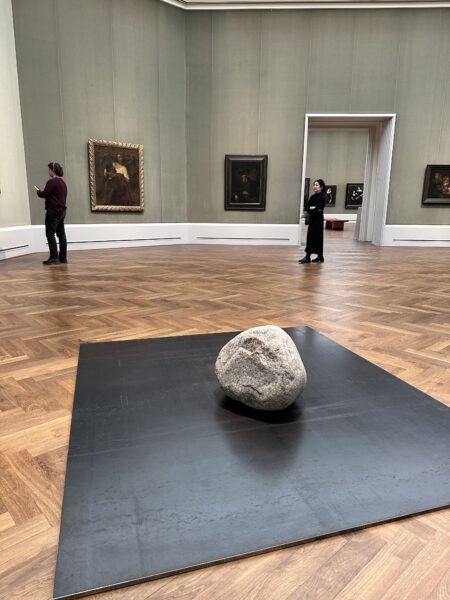
Lee Ufan at the Gemaldegalerie
At the Gemaldegalerie he has had one of his conceptual artworks installed.
Lee and Rembrandt
We would be right in thinking that Lee (born in 1936) has very little to do with Rembrandt (1606-1669). Although the latter, who was active in the 17th century, was curious about all art forms – he had a rich cabinet of curiosities with a mass of objects from overseas – and although he knew how to transgress the Academy’s principles, he lived during a time when people were getting around on horseback. But Rembrandt spent his whole life in his country and even in his local region.
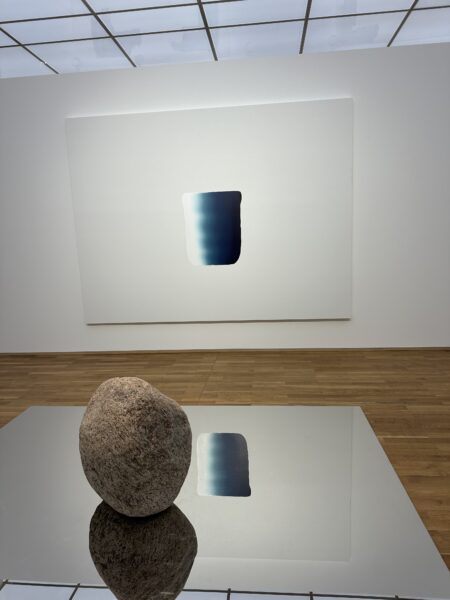
Tensions everywhere
While we’re talking about large time intervals, as an indication Lee Ufan was born in 1936 and he has a studio in Paris, Japan and Korea. He was able to live through the Second World War, tensions in the heart of Asia, between Korea and Japan, between Asia and the West, between Buddhist philosophy and Christian beliefs.
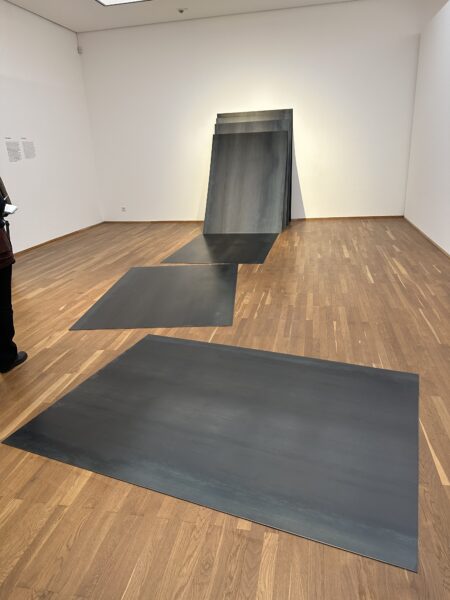
Regardless of the time period
He has seen the development of aviation as it has become commonplace and the advent of the mobile phone, which today prevents humans not only from writing but also from communicating. However, regardless of the time period, artists are ultimately driven by the same type of preoccupations. This is what I observed, once again, while interviewing him on this subject.
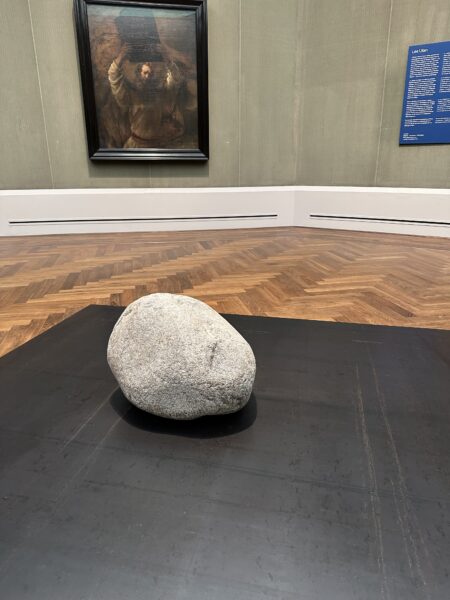
Lee Ufan at the Gemaldegalerie
| There is a very special room in your exhibition which is a dialogue between Rembrandt and one of your pieces. What are your feelings about Rembrandt… |
| Rembrandt, yes, I’ve been especially fond of him for a long time. He lived in a different era and in a different part of the world to me, but he went through a lot of experiences, failures and despair, so he has deep thoughts. And beyond Rembrandt as a person, there is something I like about him, which is an invisible, deep abyss of human suffering and thoughts expressed in his work. |
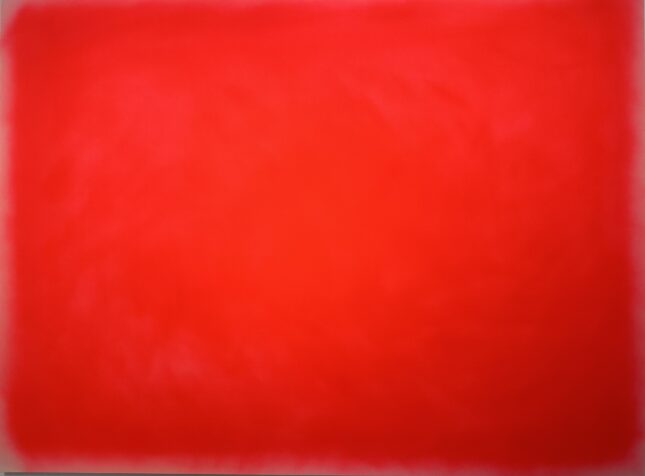 |
| But you really admire him, right? |
| Yes. And I think that Rembrandt, although he is not a modern man, has a certain longevity and a power to transcend time. So I think Rembrandt is one of the rare painters in the history of Western painting who, according to André Malraux, speaks to the soul. If I wanted to add to that, I would say I think Rembrandt is the greatest artist because he is also a painter who makes you feel that you are in an association with something more distant, vital and deeply connected in terms of time, beyond the human being. |
|
So since you are talking about the soul, do you want to have a dialogue… |
| More than that, I am a contemporary artist. Today every question is answered by A.I. or information, and people think that art is about doing what everyone knows. I need something that has a longer timeframe, a dialogue, and a connection with something that has a deep feeling. I wanted to create a place where we live today but also bring in painters from the 17th or 18th centuries and feel something that makes us smile over such a long time, so I brought in Rembrandt because I wanted it to be an opportunity to realize that we are living over a long time, not just modern times. I admire Rembrandt because, as I said, he conceives of something so deep and wide and beyond humanity. For all of these reasons, I am very grateful and excited for this opportunity to stage an exhibition. |
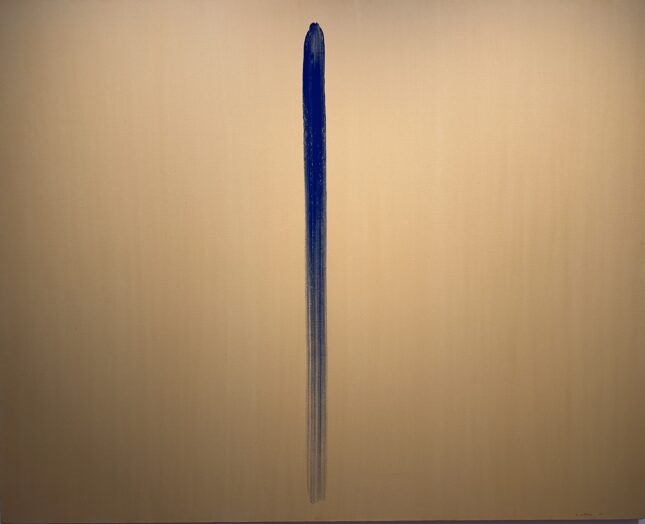 |
| What do you think of Rembrandt’s self-portraits? |
| Many artists, including Rembrandt, drew self-portraits. They’re all so good, so brilliant. Among them, Rembrandt in particular painted portraits depicting himself as a thief, a murderer, a monk, a gambler, and all sorts of other figures. However, Van Gogh, for example, also painted many “self-” portraits. When you look at Van Gogh’s self-portraits, you see only Van Gogh. All I see is “this is me.” However, Rembrandt’s self-portraits show not only Rembrandt but the universality of all human beings. Among the various aspects of human beings, it dissolves all human sorrows, joys, and everything and shows the human shadow underneath it all. So, looking at Rembrandt’s self-portraits offers you an opportunity to feel ashamed and insignificant and to quiet down a lot of thoughts. Van Gogh painted flowers, but he also painted self-portraits. If you look at a self-portrait of Van Gogh, it’s painful, it’s hard to look at. But for Rembrandt, you’re drawn to his self-portraits. |
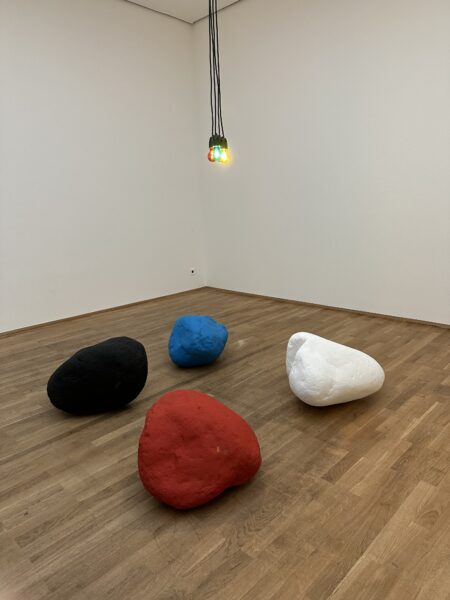 |
| And what is your response to a self-portrait of Rembrandt? I mean, could you describe what you did precisely in the room in front of Rembrandt’s portrait? |
| Like I said, it’s not that I have any particular meaning, but I wanted to take things from 100 or 200 years ago and have them meet my work, so that the viewer can experience a space where there is a lot of time between the modern and the past. Also, the mirror road reflects everything, and the viewer follows it not knowing what it might lead to. At the end of the road, the viewer meets Rembrandt, which might be even more perplexing. I wanted to create a space that gives you a chance to think about it a little bit more and evokes something different to what it is in the present. |
|
Do you sometimes do self-portraits? |
|
I don’t do self-portraits. I’ve done self-portrait-like drawings from time to time, but I’m afraid to do self-portraits because I don’t have much of my own self to look into. So I want to be an artist who is not able to do self-portraits as much as possible.
|
| But when you are painting with one brush, holding your breath to paint, isn’t this like a self-portrait? |
| It’s not me, it’s a combination of my hands, my thoughts, and the canvas. |
| I was asked by the museum (the Gemaldegalerie) to install one of my works. After much thought, I came up with the idea of placing a stone on an iron plate, which is in Rembrandt’s room called the “Room of Thoughts.” I thought that placing a stone on an iron plate would be a thought-provoking environment, so I created such a work. |
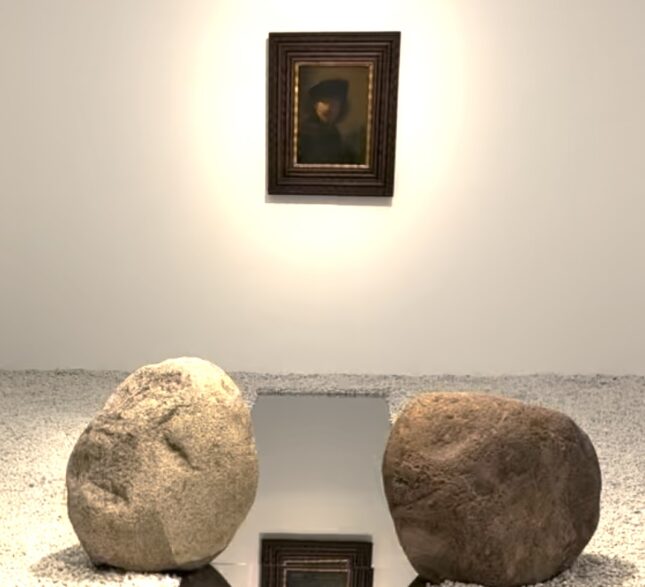 |
Until 28 April 2024. https://www.smb.museum/en/exhibitions/detail/lee-ufan/
Donating=Supporting

Support independent news on art.
Your contribution : Make a monthly commitment to support JB Reports or a one off contribution as and when you feel like it. Choose the option that suits you best.
Need to cancel a recurring donation? Please go here.
The donation is considered to be a subscription for a fee set by the donor and for a duration also set by the donor.


